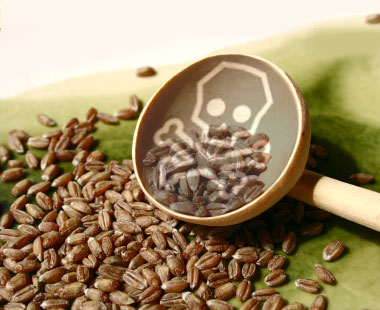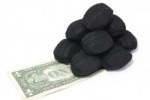 Spelt: the silent killer?
Spelt: the silent killer?
UPDATE: This is an April Fools’ Day article, entirely made up, from the the baldness and gout to the lashed legionnaire. As far as we know, you can eat your spelt in good health and conscience. Phew.
Every year, thousands of Americans reject wheat and turn instead to spelt, an ancient grain. Are they making a grave error?
First, a bit of context. Domesticated from wild grasses in the Fertile Crescent (present-day Iraq) some 10,000 years ago, spelt eventually, after generations of seed selection by farmers, mutated into wheat. But even as new derivatives spun off, spelt germoplasm was preserved and remained in use over the millennia. The Romans prized it. Julius Caesar is said to have insisted on having it for breakfast mushed into a kind of porridge. In his Decline and Fall of the Roman Empire, Edward Gibbon reports that the emperor once had a decorated legionnaire lashed mercilessly for the crime of feeding spelt mush to his horse.
The grain’s fortunes declined with those of the Empire. By the Middle Ages, higher-yielding wheat varieties had almost completely displaced spelt from Europe’s farm fields. Spelt persevered only in a few villages in Spain, Italy, and southern France, where traditional Roman-style smallholder farming held out.
Recently, of course, spelt has had a revival, conquering first the hippy food market (spelt salad, spelt bread) and later the burgeoning gluten-intolerant market. It turns out that spelt, while not completely gluten-free, has much less gluten than its offspring, wheat.
Like so many foodstuffs, spelt has followed a path from obscurity to cult product to, yes, industrialization. In 2010, the global trade in spelt reached $5 billion, up from just $150 million in 2002. The transnational agribusiness industry has taken note. Today, just three companies — Cargill, Bunge, and Archer Daniels Midland — control 80 percent of the global spelt market. GM-seed giant Monsanto has an application into the USDA to deregulate its new Roundup Ready spelt seeds, engineered to withstand copious lashings of Monsanto’s proprietary herbicide, Roundup.
Big Philanthropy is getting in on the spelt craze, too. The Gates Foundation has announced a partnership with Monsanto to develop a drought-tolerant spelt variety “appropriate for smallholder farmers in the global south,” which they claim will be ready by 2016. “We expect European and U.S. spelt consumption to have trebled by then,” a Gates spokesperson recently told The New York Times. “The developed-world low-gluten market can pull millions of Third World farmers out of poverty — so long as they access to the right technology.”
Even if the effort works — no guarantee, given that no “drought-tolerant” GM crop has yet reached market, despite much hype — the Gates/Monsanto tie-up sounds to me like a recipe for peonage for smallholder farmers. Flooding a highly consolidated commodity market with yet more boatloads of product merely drives prices down, benefiting the big buyers like Cargill while plunging farmers into cycles of debt. Any “Third World farmer” interested in signing on to this scheme should first consult Vietnamese smallholders who signed on to the World Bank’s great coffee idea of the 1990s. Financed and egged on by the Bank, farmers there put in millions of acres of coffee plants and flooded the market with low-quality beans. Their efforts caused coffee prices to plunge (in inflation-adjusted terms) last seen in the early 1900s, causing waves of misery throughout the coffee-producing world — and a profit boom for the four companies that dominate the coffee market.
Meanwhile, as spelt production ramps up and industrializes, doubt is being cast on its health benefits. Researchers at the Academy of Gastronomic Science in Italy have linked heavy spelt consumption to increased likelihood of gout, early baldness, and cancers of the spleen and kidney. In a paper [PDF] published in March, they speculate that the grain may have toxic properties that were offset by other components of ancient Fertile Crescent and Roman diets. “Both in the ancient Near East and in traditional Southern European cultures, agricultural diets were supplemented by a robust variety of wild plants,” study author Sofia Fabrizio told the Roman newspaper Il Manifesto. One in particular, the leafy weed Ageratina altissima, seems to have followed spelt from present-day Iraq into southern Europe.
Ageratina altissima may end up being the component that turns spelt from the potential carcinogen it is today into the healthy food celebrated in Roman times. As usual with these questions, more research is needed — but we can be sure that the agro-industrial complex, which controls the ag-research agenda, won’t fund it. Why? Because unlike spelt, Ageratina altissima can grow only on small plots. Its stubbornly weed-like properties make it resistant to industrialization. It is what botanists call a “thug weed” — it only thrives under challenging circumstances.
That proud, defiant weed serves as a beacon for us all. We, too, must resist industrialization — and just say no to Big Spelt.



